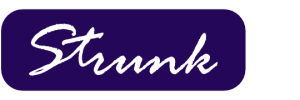Overdraft Privilege Provides a Much Needed Service
Before the early 1990’s, banks typically returned all items that would cause an overdraft on a consumer checking account. When overdraft privilege programs started consumers were thrilled that their overdrawn items wouldn’t automatically be returned to the merchant. Thirty years later, Strunk, the pioneer of overdraft programs, is still helping banks provide efficient, compliant overdraft services to community banks across the country.
Overdraft programs have come under scrutiny since 2005 when the FFIEC published best practices for paying items into overdraft status. All of the guidance set forth by the regulators were meant to disclose the bank’s policies and to ensure those policies were followed…just like any product or service a bank offers.
In 2010 banks couldn’t automatically pay and charge for a debit card caused overdraft without consumer consent. Another great regulation! Then in 2011, the FDIC asked banks to provide notice to excessive users of overdrafts by notifying consumers each time that had six overdrafts in a twelve month period. Perfect solution to reminding customers of their bad habits!
More recently the FDIC has been concerned about disclosing second presentment fees on the same check. This occurs when an insufficient item comes through, the bank returns it to the merchant, and the merchant sends it back so they can get paid for the purchase the consumer made. Notifying consumers that a fee may be levied against the second presentment is a tremendous idea. There is also a concern that debit card transactions may be approved with a positive balance and when the item actually hits the account it is negative and an overdraft fee is charged.
Lastly, the CFPB is concerned about “junk fees” where someone makes a deposit then the check they deposited comes back insufficient. Some banks levy a charge for the insufficient deposited item even though the depositor wouldn’t have known that the check would be returned.
Contact Strunk at info@strunkaccess.com to learn more about how to run an Overdraft Privilege program in a compliant and profitable way that benefits consumers.



